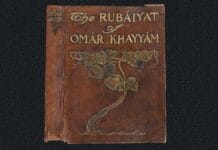Rabindranath Tagore’s On the Day When the Lotus Bloomed, from his renowned collection Gitanjali, is a contemplative exploration of spiritual awakening and the soul’s intimate connection with the divine. In this poem, Tagore uses the blooming lotus as a central metaphor for the moment of enlightenment, where human consciousness opens itself to divine realisation. The poem expresses a sense of wonder, reverence, and humility as the speaker recounts the transformative moment when their heart becomes a vessel for divine grace.
The poem begins by recalling the day the lotus bloomed, a symbolic event representing spiritual fulfilment and self-discovery. The lotus, a sacred symbol in Indian philosophy and literature, embodies purity, transcendence, and awakening the soul to a higher truth. Tagore masterfully captures the emotional intensity of this moment, describing the speaker’s heart as brimming with the splendour of the firstborn day, evoking a sense of renewal and rebirth.
The poem reflects a dual journey —an external waiting for divine grace and an internal preparation of the soul. The speaker reflects on their efforts to create an environment conducive to receiving the divine. This preparation includes setting aside worldly distractions, represented by the lamp in the niche and the cessation of mundane activities. These acts signify the poet’s humility and readiness to embrace the divine presence.
The transformative moment of enlightenment is described as a union of the soul with the divine. The speaker’s eyes were opened, signifying a shift in perception from material to spiritual reality. The event is accompanied by cosmic imagery, such as the drumbeat of the destiny of the world and the fragrance of heaven, underscoring its universal and transcendental significance.
The poem ends with a sense of tranquillity and fulfilment. The lotus blooming signifies a fleeting experience and an enduring connection with the divine, marking the culmination of a lifelong spiritual quest. Tagore’s lyrical language and rich symbolism imbue the poem with a timeless quality, making it a profound meditation on the human quest for spiritual enlightenment.
Key Elements
Imagery of the Lotus
The lotus serves as a potent symbol throughout the poem. In many cultures, including India, the lotus represents purity, beauty, and spiritual awakening. The blooming of the lotus signifies the moment of realisation or enlightenment, reflecting the poet’s inner journey.
Divine Presence
The poet expresses a deep yearning for the divine. The imagery suggests an intimate relationship between the speaker and the divine presence, evoking feelings of love and longing. The blooming lotus becomes a metaphor for the unveiling of spiritual truths.
Emotional Resonance
The poem captures the essence of spiritual awakening and the joy that accompanies it. The speaker’s emotions oscillate between longing and fulfilment, illustrating a profound connection to nature and the divine.
Themes
Spiritual Awakening and Divine Realisation
Tagore’s poem is fundamentally about the experience of spiritual awakening. The blooming lotus symbolises the soul’s journey from ignorance and bondage to enlightenment and liberation. Tagore presents this awakening as a profound and transformative experience, likened to the dawn of a new day.
Union of the Individual and the Divine
The poem explores the idea of the soul’s union with the divine as the ultimate goal of human existence. The moment of enlightenment is depicted as personal and universal, highlighting the interconnectedness of individual realisation and cosmic harmony.
Preparation and Surrender
Tagore emphasises the importance of preparing the soul for divine grace. Acts of humility, devotion, and surrender are depicted as essential steps in the spiritual journey. The speaker’s readiness to “set the lamp in the niche” and “stop work” reflects their willingness to relinquish worldly concerns in favour of spiritual fulfilment.
Symbolism and Imagery
The Lotus
The lotus serves as the central symbol of the poem, representing purity, spiritual awakening, and the soul’s connection to the divine. Its blooming signifies the culmination of inner growth and the realisation of higher truth.
The Lamp in the Niche
The act of lighting a lamp symbolises the preparation of the soul to receive divine light. It reflects the poet’s belief in the importance of creating an environment of focus and devotion for spiritual growth.
Cosmic Imagery
Tagore uses universal and cosmic symbols, such as the drumbeat of the destiny of the world and the fragrance of heaven, to elevate the individual experience of enlightenment to a cosmic scale. These images convey the interconnectedness of the personal and the universal.
Structure and Language
The poem’s structure mirrors the process of spiritual awakening. It begins with anticipation, builds to a moment of epiphany, and concludes with a serene realisation. The rhythm and flow of the poem evoke the natural unfolding of the lotus, reinforcing the idea that spiritual enlightenment is a gradual and organic process.
Tagore’s language is simple yet profound, reflecting his ability to convey complex spiritual ideas in an accessible and evocative manner. His choice of metaphors and symbols conveys deep philosophical ideas in an accessible way. The tone is reverent and reflective, embodying the poet’s humility before the divine. The use of repetition, such as on the day, creates a rhythmic cadence, emphasising the transformative nature of the experience.
Philosophical Underpinnings
The poem reflects the essence of Indian spiritual philosophy, particularly the Vedantic concept of self-realisation and unity with the divine. Tagore’s portrayal of enlightenment as a natural and inevitable event, akin to the blooming of a lotus, aligns with the idea that spiritual awakening occurs when the soul is ready to receive it.
The emphasis on surrender and humility resonates with the Bhakti tradition, which advocates devotion and faith as pathways to divine realisation. At the same time, the poem’s universal themes and symbols transcend religious boundaries, making it relevant to readers of diverse backgrounds.
Universality and Relevance
Despite its roots in Indian mysticism, the poem’s themes of longing, enlightenment, and divine grace transcend cultural and religious boundaries. The quest for meaning, the longing for connection with something greater, and the transformative power of spiritual awakening are experiences that resonate across cultures and traditions. The poem’s rich symbolism and open-ended interpretation invite readers to relate it to their spiritual journeys. As a symbol of purity and spiritual awakening, the lotus finds parallels in various cultures and religions, making the poem universally relatable.
Emotional and Aesthetic Impact
The poem evokes a sense of wonder and serenity, capturing the beauty and mystery of spiritual awakening. The imagery of the blooming lotus, the lighted lamp, and the cosmic drumbeat create a vivid and immersive experience, drawing readers into the speaker’s world. The emotional intensity of the poem, balanced by its tranquil conclusion, leaves a lasting impression of fulfilment and peace.
On the Day When the Lotus Bloomed is a testament to Rabindranath Tagore’s genius as a poet and philosopher. Through its lyrical beauty, rich symbolism, and profound philosophical insights, the poem captures the essence of spiritual awakening as a personal and universal experience. Tagore’s ability to blend the mystical with the tangible, the individual with the cosmic, and the temporal with the eternal makes this poem a masterpiece of spiritual literature, offering inspiration and reflection to readers across generations and cultures.




























